Pollution
We are working to systematically reduce emissions of hazardous chemical substances associated with our business activities and commit to preventing environmental pollution.
Metrics and Targets
The Group's target (KPI)
FY2030: 20% improvement in hazardous chemical substance emissions per sales unit (compared with FY2018)
We are working to reduce hazardous chemical substance emissions through ongoing efforts to prevent leaks and transition to processes that create fewer emissions. In FY2023, due to those efforts in the carbon fibers and resin and plastic processing businesses, our hazardous chemical substance emissions decreased by 17% compared with the previous fiscal year, reaching 656 tons . This represents a 37% improvement in emissions per sales unit compared with FY2018.
. This represents a 37% improvement in emissions per sales unit compared with FY2018.
Trends in hazardous chemical substance emissions and emissions per sales unit
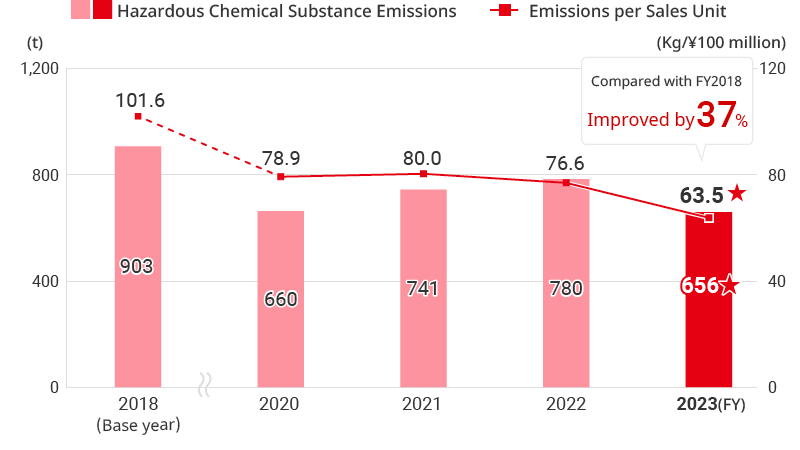
- *Among the Class 1 designated chemical substances under the Act on Confirmation, etc. of Release Amounts of Specific Chemical Substances in the Environment and Promotion of Improvements to the Management Thereof and chemical substances indicated by the Japan Chemical Industry Association, chemical substances emissions to atmosphere, water, and soil which are harmful to aquatic environments and the ozone layer in the Globally Harmonized System of Classification and Labelling of Chemicals (GHS) classification defined by the United Nations (UN) are subject to the calculation for emissions.
- *Per sales units are calculated using consolidated net sales as the denominator.
Top 10 chemical substance emissions
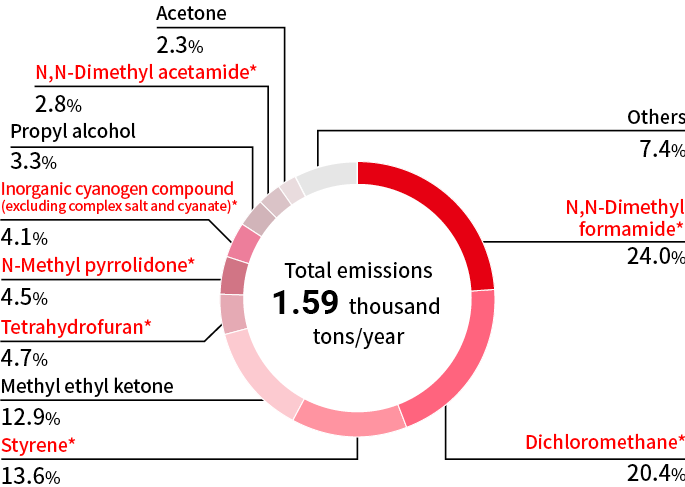
- *For the Class 1 designated chemical substances under the Act on Confirmation, etc. of Release Amounts of Specific Chemical Substances in the Environment and Promotion of Improvements to the Management Thereof and chemical substances indicated by the Japan Chemical Industry Association, the emissions are subject to the calculation of atmospheric, soil and water, and landfill amounts within business sites.
- *Red text: the Class 1 designated chemical substances under the Act on Confirmation, etc. of Release Amounts of Specific Chemical Substances in the Environment.
Impact on Atmosphere
NOx emissions resulting from fuel use were down 23% from the previous fiscal year, at 0.69 thousand tons . SOx emissions decreased by 21% from the previous fiscal year, to 1.68 thousand tons
. SOx emissions decreased by 21% from the previous fiscal year, to 1.68 thousand tons . VOC emissions decreased by 4% from the previous fiscal year, to 1.49 thousand tons
. VOC emissions decreased by 4% from the previous fiscal year, to 1.49 thousand tons .
.
Trends in NOx emissions
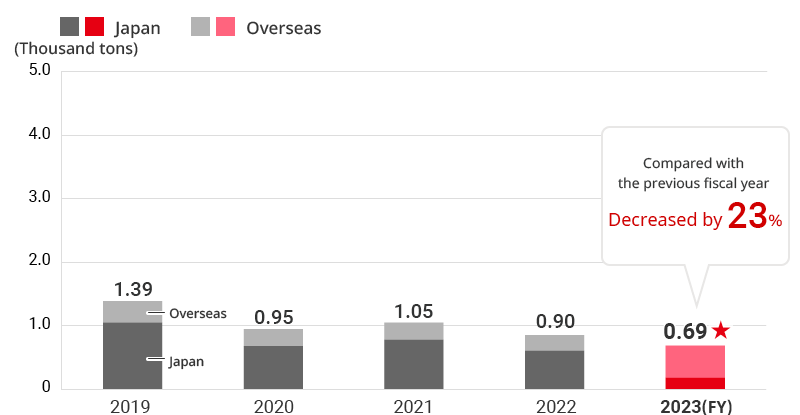
- *Corrected the FY2021 NOx figures in January 2024.
Trends in SOx emissions
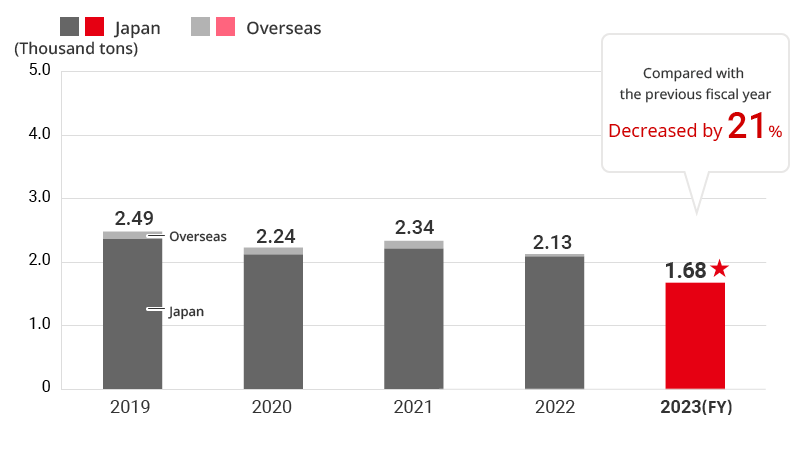
Trends in VOC emissions
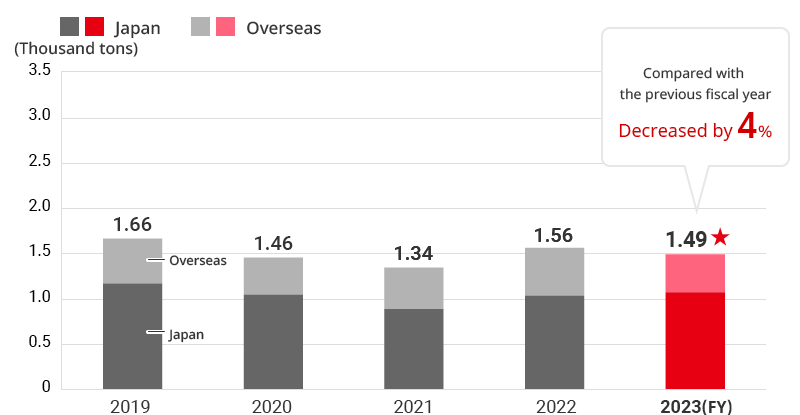
Initiatives
In addition to conforming to each country's and territory's legislation relating to the prevention of soil pollution, the Teijin Group formulated guidelines for preventing soil and groundwater pollution. Under these guidelines, we are striving to prevent soil and groundwater pollution resulting from our business operations.
